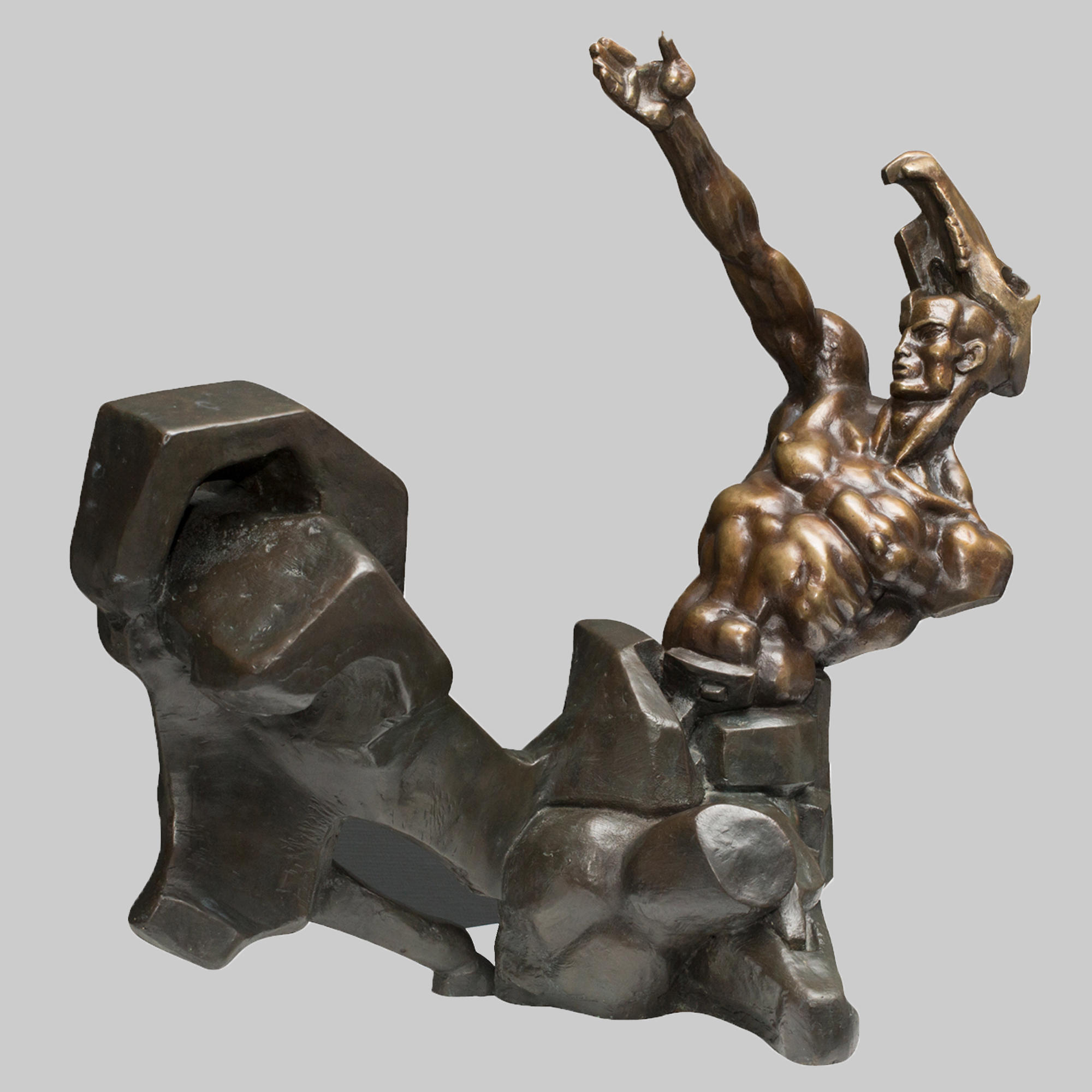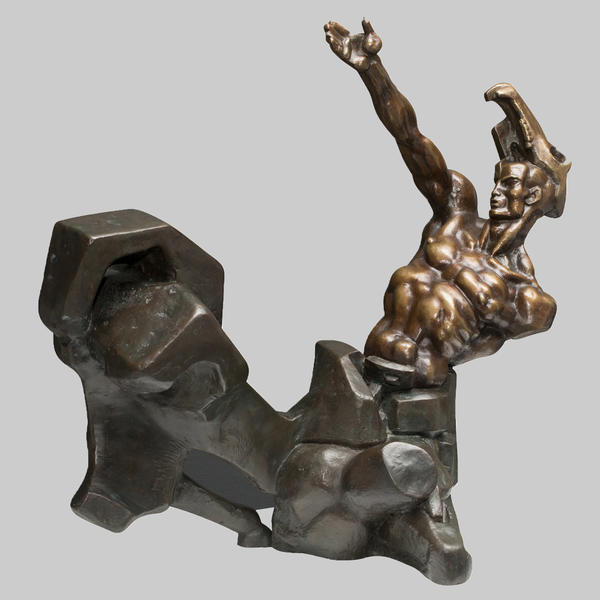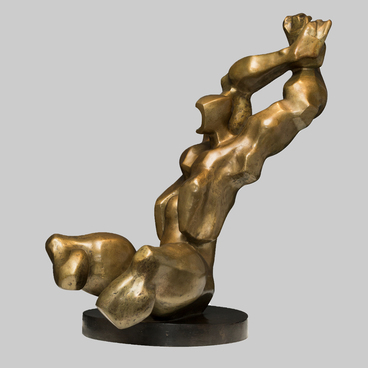The Pointing Centaur was sculpted by Ernst Neizvestny in 1989. The same sculpture of a larger size, called the Great Centaur, was donated by the author to the UN headquarters in Geneva. It is now installed in Ariana Park near the Palace of Nations.
Geneva was a special place for Ernst Neizvestny, his first permanent refuge in emigration. For the rest of his life, the artist was grateful to the city and reciprocated for the hearty welcome by giving it one of his most famous works.
The centaur is a character of Ancient Greek mythology, a wild creature with a horse body and a human torso and head attached to it. Scholars tend to think the emergence of this fictional character in legends to have resulted from the striking impressions which settled peoples who didn’t breed horses gained when they first saw warrior riders of nomadic tribes.
When it first appeared in mythology, the centaur symbolized wild and unrestrained destructive forces, an irresistible craving for freedom. In later ages, it personified a unity of man and nature. Still later, a dual nature of the human soul, the site of fighting between the good and the evil. The idea of a man-horse inspired numerous poets and artists. This is how William Shakespeare described centaurs in King Lear: “But to the girdle do the gods inherit, Beneath is all the fiends”.
The centaur is Neizvestny’s favourite metaphor in art. In this mythical character, he sees a merger of human, animal and technological essences. His sculptures reflect the struggle between these entities, painful thinking about the meaning of life, the balance of the good and evil in the world, the freedom of an artist’s self-expression.
The Pointing Centaur was sculpted by Ernst Neizvestny in 1989, during his emigration in the US. He often came to the USSR at that time, lecturing at Moscow University, creating statues and monuments. In the 1960’s, the Communist Party leadership would harshly criticize the sculptor for abstract art and symbolism and require sculptures compliant with socialist realism. But at the turn of perestroika, the world-famous sculptor’s art was at last recognized in his mother country. It was a time when his artistic style was finalized. His works demonstrated features of classical, symbolic, abstract and expressionist art.
The Pointing Centaur depicts a human bursting out of shapeless paste resembling a horse’s body and abstract structures at the same time. The man’s figure, looking like an antique sculpture, is realistically treated, with all details carefully drawn. The character of the man breathes lust for freedom, unrestrainable energy. His raised hand and goal-seeking look express willingness to move ahead and up, to a lofty goal. One peculiarity of the sculptor is an ability to combine what hardly admits combining: lifeless nature and living nature, life and death, the good and the evil. This synthesis of medley elements is represented by deformed parts of the human body and by replacing them with parts of animal bodies or technical objects.
Geneva was a special place for Ernst Neizvestny, his first permanent refuge in emigration. For the rest of his life, the artist was grateful to the city and reciprocated for the hearty welcome by giving it one of his most famous works.
The centaur is a character of Ancient Greek mythology, a wild creature with a horse body and a human torso and head attached to it. Scholars tend to think the emergence of this fictional character in legends to have resulted from the striking impressions which settled peoples who didn’t breed horses gained when they first saw warrior riders of nomadic tribes.
When it first appeared in mythology, the centaur symbolized wild and unrestrained destructive forces, an irresistible craving for freedom. In later ages, it personified a unity of man and nature. Still later, a dual nature of the human soul, the site of fighting between the good and the evil. The idea of a man-horse inspired numerous poets and artists. This is how William Shakespeare described centaurs in King Lear: “But to the girdle do the gods inherit, Beneath is all the fiends”.
The centaur is Neizvestny’s favourite metaphor in art. In this mythical character, he sees a merger of human, animal and technological essences. His sculptures reflect the struggle between these entities, painful thinking about the meaning of life, the balance of the good and evil in the world, the freedom of an artist’s self-expression.
The Pointing Centaur was sculpted by Ernst Neizvestny in 1989, during his emigration in the US. He often came to the USSR at that time, lecturing at Moscow University, creating statues and monuments. In the 1960’s, the Communist Party leadership would harshly criticize the sculptor for abstract art and symbolism and require sculptures compliant with socialist realism. But at the turn of perestroika, the world-famous sculptor’s art was at last recognized in his mother country. It was a time when his artistic style was finalized. His works demonstrated features of classical, symbolic, abstract and expressionist art.
The Pointing Centaur depicts a human bursting out of shapeless paste resembling a horse’s body and abstract structures at the same time. The man’s figure, looking like an antique sculpture, is realistically treated, with all details carefully drawn. The character of the man breathes lust for freedom, unrestrainable energy. His raised hand and goal-seeking look express willingness to move ahead and up, to a lofty goal. One peculiarity of the sculptor is an ability to combine what hardly admits combining: lifeless nature and living nature, life and death, the good and the evil. This synthesis of medley elements is represented by deformed parts of the human body and by replacing them with parts of animal bodies or technical objects.



